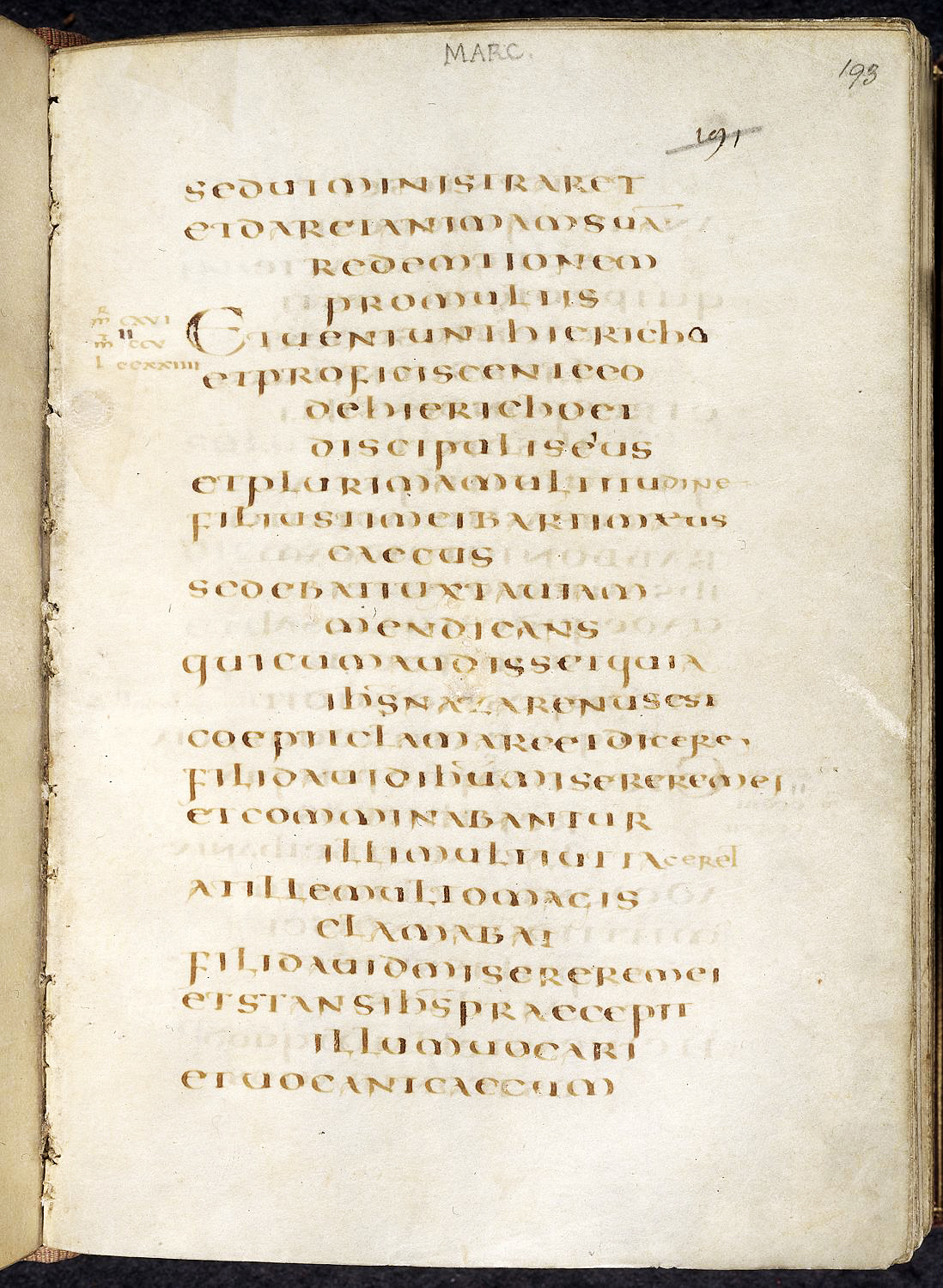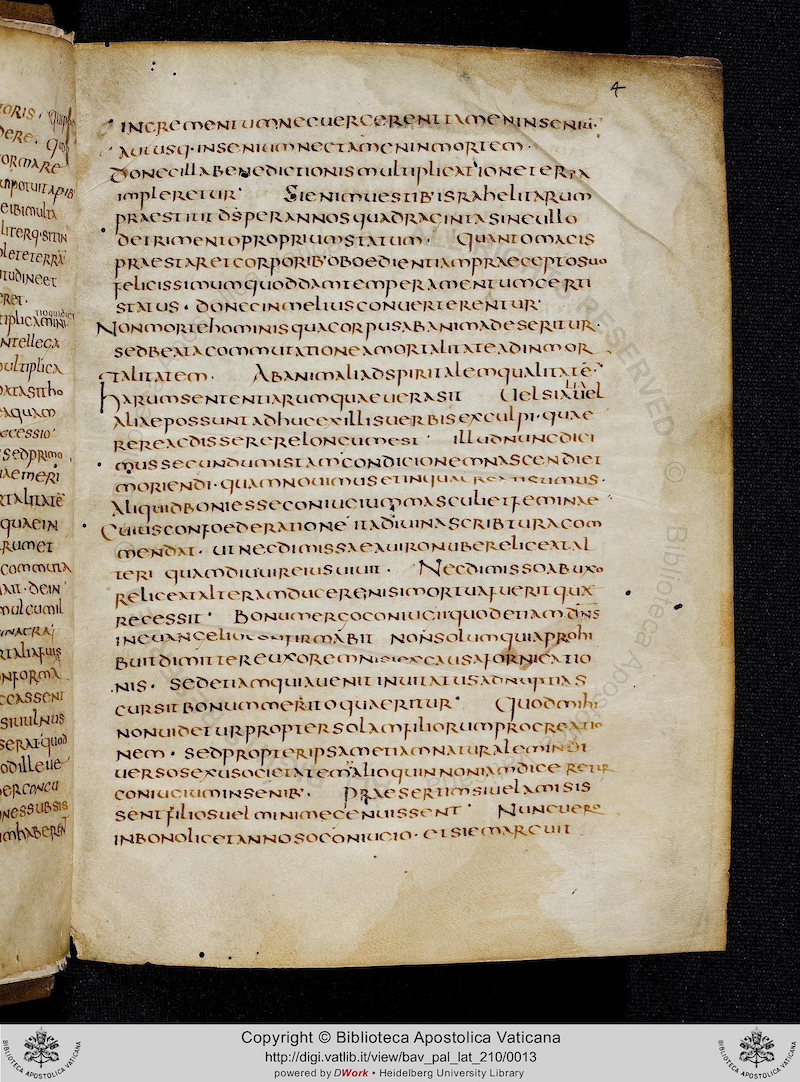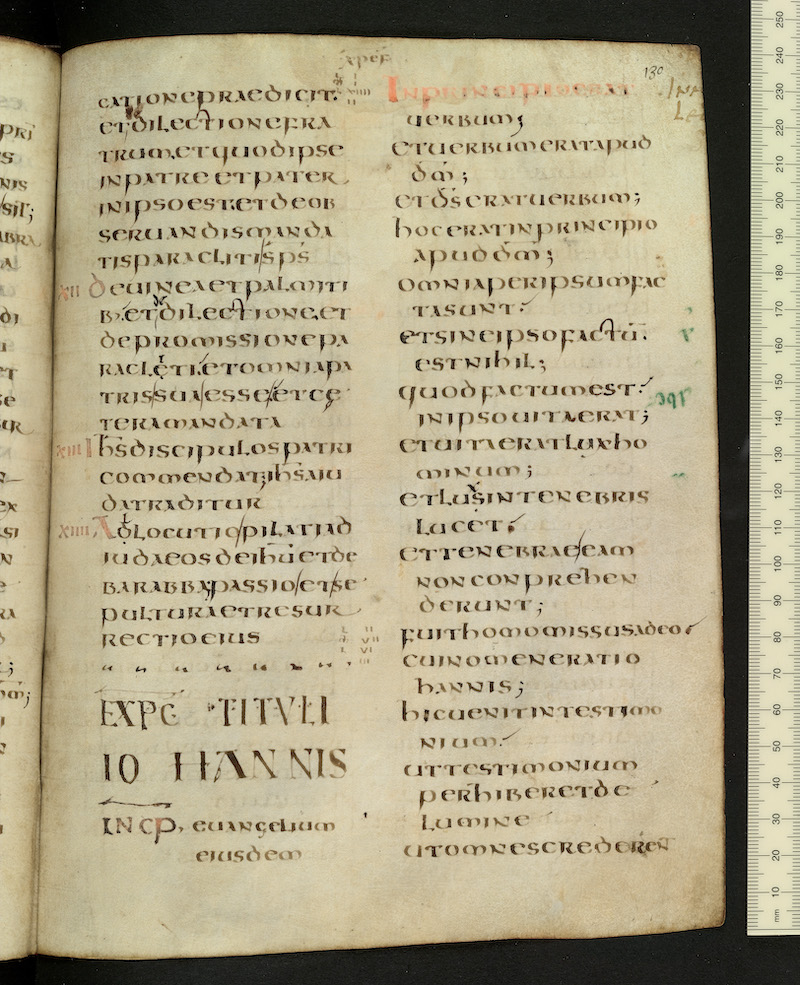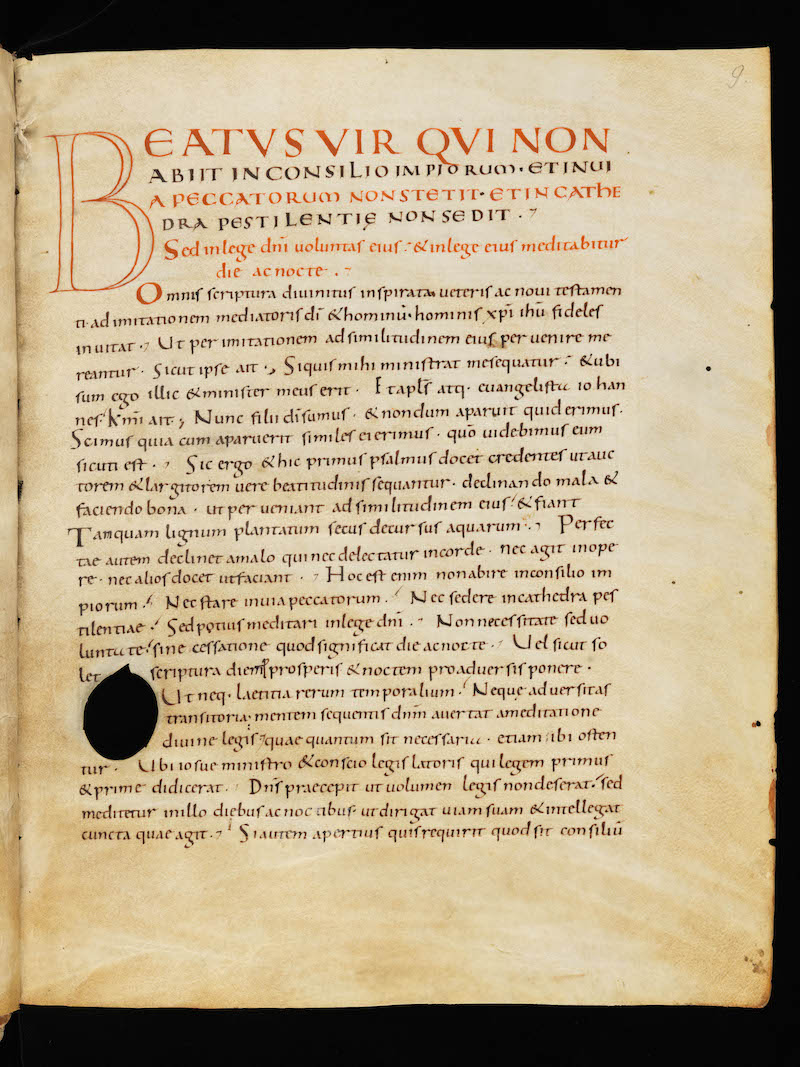
Uncial, 6th century
-
Title
Gospels -
Text
Mark 10.45-49 -
Language(s)
Latin -
Writing System
Roman -
Script(s)
Uncial -
Country
Great Britain -
City
London -
Repository
British Library -
Shelf Mark
Harley 1775, fol. 193r -
Common Name
The Harley Gospels -
Century
6th century -
Year Range
575-600 -
Place Of Origin
Italy -
Provenance
In France by the 9th century. Owned by Cardinal Mazarin in the 17th century. Purchased by Robert Harley in the early 18th century, and from the Harleian collection to the British Museum in 1753 -
Bibliography
Bonifatius Fischer, Lateinische Bibelhandschriften im frühen Mittelalter (1985).
Patrick McGurk, Latin Gospel Books from A. D. 400 to A. D. 800 (1961).
-
External Facsimile
This small manuscript of the Gospels (only about 7" x 5", with a written area only the size of an index card) is written in a high-grade Uncial script of the middle period. In the main text, both serifs and tituli are made with very fine hairstrokes extended by curves — a sign of the calligraphic execution of the script. Initials take the form of enlarged Uncials, embellished with double penstrokes and wedge-shaped serifs. There are corrections by two contemporary correcting hands, one who adds corrections in a smaller script at line end, and one, using a darker ink, who corrects a number of readings and adds information to marginal annotations.
The layout is per cola et commata, with each sense unit starting on a new line. This layout was associated with Jerome's Vulgate translation of the Bible and occurs in a majority of pre-600 Vulgate manuscripts. Because it is profligate of space, it is used only in the highest-grade codices.
The text in this manuscript is witness Z in the textual criticism of the Vulgate. The manuscript contains the Eusebian canon tables, and the Eusebian sections are marked in the margins, as seen on this page, with references to the canon table numbers added by a contemporary correcting hand.
Running titles (in a form of Rustic Capitals to imitate ancient practice) are in a modern hand, as is foliation.
Acknowledgements: Described by Carin Ruff
Transcription
1 sed ut ministraret
2 et daret animam sua(m)
3 redemtionem
4 pro multis
5 Et ueniunt hierich[e/o]
6 et proficiscente eo
7 de hiericho et
8 discipuli e\i/us
9 et plurima multitu/dine\
10 filius timei bartimæus
11 caecus
12 sedebat iuxta uiam
13 mendicans
14 qui cum audisset quia
15 ie(su)s nazarenus est
16 coepit clamare et dicere.
17 fili dauid ie(s)u miserere mei
18 et comminabantur
19 illi multi ut ta/ceret\
20 at ille multo magis
21 clamabat
22 fili dauid miserere mei
23 et stans ie(su)s praecepit
24 illum uocari
25 et uocant caecum
Paleographic Features
1. The running titles are a modern addition.
2. Line 3: The e, d, and m (seen in redemtionem) are characteristic Uncial forms. Their precise shape is useful in dating this manuscript as a mature, but not late, Uncial hand. Over the course of the centuries in which Uncial was used, the crossbar of e gradually descends to the midpoint of the letter, and the stem of d leans over until it is almost horizontal. In this hand, the crossbar of e is still quite high and the stem of d leans quite far to the left, but not to the point where it is parallel to the line of writing. The ms nearly-symmetrical lobes, approximately equally rounded on either side, are characteristic of a mature Uncial.
3. An L that ascends markedly above minim-height in an otherwise majuscule script, like the one in line 4, is characteristic of Uncial.
4. Treatment of nomina sacra, lines 15 and 16: The titulus or common mark of abbreviation over the IHS, IHU abbreviations is a very fine hairstroke, curved at the left side, which echoes the treatment of serifs by this scribe.
5. This hand has more elaborate hairstroke serifs and decorative extensions to serifs than in many Uncial manuscripts, which are signs of a very high-grade version of the script. The F at the beginning of line 16 is an example.
6. The marginal annotation next to line 5 indicates which passages in the Gospels of Matthew and Luke correspond to this passage in Mark. Passages are numbered according to the Eusebian Sections system, which was the usual system of reference before the advent of the modern chapter and verse numbering system. One of the contemporary correcting hands has added II to indicate that the conspectus of passages that occur in Matthew, Mark, and Luke (but not John) is the second canon table, which is found on fol. 7v of this manuscript.
7. A contemporary correcting hand has corrected hieriche to hiericho (line 5) by altering the shape of the e (and erasure of a titulus over e, according to Michelle Brown); and eus to eius (line 8) with the insertion of a small superscript i.
8. A contemporary correcting hand has added dine in smaller letters at the end of line 9 and caret at the end of line 19.



